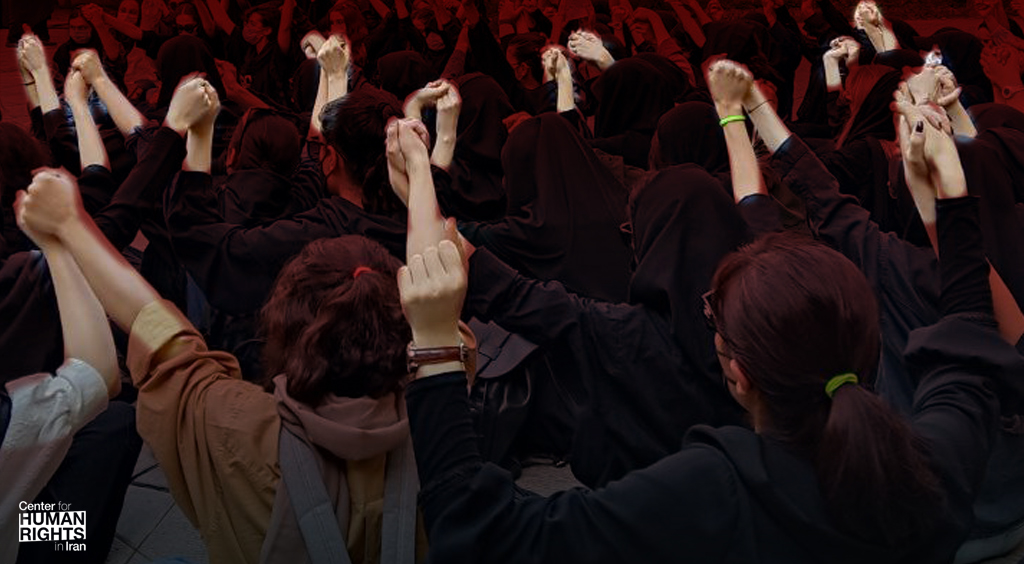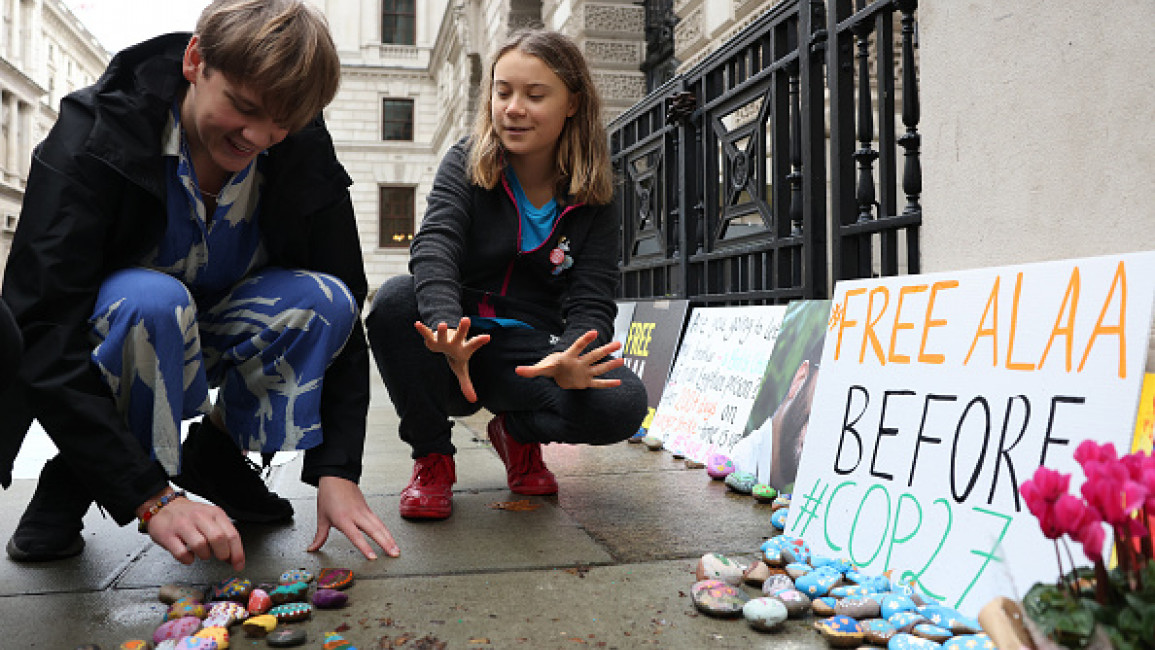October 21, 2022
Over the past decade, the Iranian government has perfected a sophisticated model of digital authoritarianism that has provided the regime with a vast set of tools to silence dissent online and offline. As massive anti-government protests spread across the country following the death of Mahsa Amini, an Iranian woman who was arrested by Tehran’s “morality police” for improperly wearing her hijab, authorities have relied on these tactics to hinder mobilization efforts and restrict the free flow of information within and outside the country.
By shutting down the internet and blocking social media platforms, authorities can keep people from organizing and limit reporting on the situation, namely security forces’ disproportionate violence against protesters.
While these repressive tactics have enabled the Iranian regime to effectively silence unrest in the past, the sheer magnitude of the current protests has tested authorities’ ability to quickly quell this unwavering dissent. Fractures to Iran’s deeply entrenched model of digital authoritarianism are being exposed, and it is unclear what comes next. However, supporters of internet freedom can take concrete actions to push back against Iran’s long-standing tactics to silence dissent and can simultaneously support Iranians’ calls for freedom.
Tightly Controlling the Online Space
For years, the Iranian government has been building digital walls to isolate Iranians from the global internet, specifically by developing its National Internet Network, which is a domestic internet backbone centralized under the government that allows authorities to more easily censor online content. Following in the footsteps of China’s Great Firewall, authorities have carefully curated an internet that maximizes their control over the online space. By centralizing the internet infrastructure under the government, authorities can more easily shut down the internet, restrict access to major social media and communications platforms, block foreign news websites, and surveil online users.
Nearly all major social media platforms are blocked in Iran, as are thousands of websites. Instagram and WhatsApp were the two remaining foreign apps available, although they were blocked amid the current protests. Some authorities have called to make these bans permanent. Proposed legislation, ironically titled the User Protection Bill, would impose additional requirements on foreign social media companies to comply with government censorship and further centralize the internet infrastructure under the armed forces, effectively sealing the fate of any remaining foreign social media companies in Iran.
Alongside blocking platforms, officials have been encouraging Iranians to use domestic versions of popular social media and messaging apps, many of which receive substantial support from the state. By pushing Iranians onto these domestic apps, not only is the cost of blocking international platforms reduced, but the risk of surveillance is heightened given the apps’ extensive data collection and poor security measures.
Repressive legislation strictly regulates what kind of content is permissible online. Many of these laws include harsh criminal penalties for online speech. As the current protests erupted, the Islamic Revolutionary Guard Corps (IRGC), a branch of the military, called on the judiciary to prosecute those who spread “rumors” amid the ongoing unrest.
Online users who dare stray from the red lines set by Iranian authorities risk harsh retribution. In late September, as protesters took to the streets, two activists who ran a Telegram channel and Instagram account dedicated to LGBT+ issues were sentenced to death by the Islamic Revolution Court of Urmia after being found guilty of “corruption on earth,” in part due to their online activism.
The stakes for dissent – both online and offline – are incredibly high, naturally encouraging many Iranians to self-censor and carefully toe government red lines. With bated breath, the world is watching Iranian women burning their hijabs in the street, testing whether the decades-long status quo of repression has reached a breaking point.
How Defenders of Internet Freedom Can Support Iranian Protesters
Whether these protests result in revolutionary regime change or reluctant capitulation from the government remains to be seen. Either way, there are clear avenues for policymakers, tech companies, and internet freedom advocates to chip away at Iran’s longstanding system of digital authoritarianism, which in turn can support the calls for change echoing through the streets.
Iranian civil society, the diaspora community, and digital rights groups have been working tirelessly to call attention to the regime’s digital repression tactics and highlight how internet freedom can be upheld during the protests. Shortly after the protests and subsequent internet shutdowns began, these groups started sharing tech-savvy measures to help Iranians stay connected and safe online.
One such measure is for virtual private network (VPN) companies to make their technology more accessible to Iranian users, who can use them to access blocked websites and communications platforms. While VPNs are an important tool, their utility will be limited during a total internet shutdown.
Despite the significant censorship of social media platforms in Iran, platforms like Telegram and WhatsApp continue to serve as critical tools for sharing information both within and outside of the country. Tech companies can adjust their product design or provide programs to Iranian users to increase their safety and protect the personal information of their users – as Facebook did following the Taliban takeover in Afghanistan – by hiding friends lists and locking account access.
Some of this work is already under way. Some tech companies have been working with members of the Iranian diaspora to help remove sensitive information or delete account information after someone has been arrested by security forces. Signal also recently called on its users around the world to set up proxy servers to help Iranians access its encrypted communications services.
Tech companies have a checkered past when it comes to content moderation in Iran, which at times has aided and abetted the regime’s attempts to silence critics. Since the protests began, Meta was reportedly accused of deactivating Iranian WhatsApp accounts and removing Instagram posts. Telegram, which has repeatedly been critiqued by global civil society and technical experts for its lack of transparency, has been called out for enabling the Iranian government to identify and track protesters. Tech companies must keep the rights and safety of online users front and center, and should use all available avenues to push back against censorship orders.
Companies should also bolster their Persian-language content moderation. For example, research has identified consistent problems with Meta’s content moderation of non-English content. To ensure fair and transparent content moderation, tech companies with user bases in Iran should engage with the diaspora and digital rights groups, whose political and cultural expertise can help inform their policies and approaches.
Multilateral institutions and democratic governments can continue to pressure Iranian authorities to refrain from conducting internet shutdowns, particularly during protests. While international condemnation may not resonate within the Iranian government, multilateral bodies like the Freedom Online Coalition should leverage their name recognition to demonstrate their solidarity with Iranian protesters and use their diplomatic ability to call on the government to limit its attacks to free expression online.
For years, sanctions imposed on Iran for illicit nuclear activity, terrorist financing, corruption, and human rights abuses drastically limited the kinds of online content to which Iranians had access, including news, communications platforms, and apps. When combined with the regime’s proclivity to cut off access to the internet during times of unrest, this has meant severely restricted internet freedom in Iran. Access to information is critically important, particularly during fast-evolving protests, and it is vital that officials keep the preservation of internet access in mind when considering sanctions policy for Iran moving forward.
Since the protests began, the U.S. government has taken encouraging steps to lessen the impact of sanctions on Iranians and expand internet access amid the shutdowns. Specifically, the federal government’s updated guidance to tech companies in light of the Iranian protests will widen access to social media platforms, cloud-based services, and VPNs, and will authorize certain software that can protect users from having their devices infected with spyware or hacking tools.
Some U.S. tech companies jumped at the chance to introduce their products in Iran following the easing of sanctions. Circumvention tools have already provided relief to Iranians trying to bypass government censorship. Other products that could provide long-term solutions to Iran’s digital censorship are less likely to help protesters in the immediate future. Though SpaceX’s Starlink satellite internet reportedly became available in Iran in late September, the physical hardware required to connect will be difficult for Iranian internet users to obtain without outside assistance.
The challenges facing those who want to build and protect internet freedom in an environment as repressive as Iran are immense. But fostering an open and safe online space can go a long way to support the extraordinary and courageous people in Iran in their fight for fundamental freedoms.
Cathryn Grothe
Cathryn Grothe (@Cathryn_Grothe) is a Research Analyst at Freedom House, covering the Middle East and North Africa for the Freedom in the World and Freedom on the Net publications.

 Recommendations for the U.S. Government and the International Community
Recommendations for the U.S. Government and the International Community
